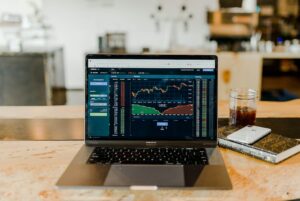Understanding Forex Margin Requirements: A Beginner’s Guide
Forex trading is an exciting and potentially profitable market for those who are willing to put in the time and effort to learn how it works. One of the most important concepts that every beginner trader should understand is forex margin requirements.
Margin is essentially a good faith deposit that a trader needs to put up in order to open a position in the forex market. It acts as a collateral for the leverage that the trader is using to amplify their trading position. Margin requirements are set by the broker and vary depending on the leverage offered and the currency pair being traded.
The concept of margin can be a bit confusing for beginners, but it is crucial to understand because it directly affects the amount of leverage a trader can use. Leverage allows traders to control larger positions with a smaller amount of capital. For example, a 100:1 leverage means that for every $1 the trader puts in, they can control $100 worth of a currency pair.
Let’s say you have a trading account with $10,000 and you want to trade the EUR/USD currency pair with a leverage of 50:1. With a leverage of 50:1, you can control $500,000 worth of the currency pair. However, in order to open such a position, you need to put up a certain amount of margin.
Margin requirements are usually expressed as a percentage. For example, if the margin requirement for the EUR/USD pair is 2%, it means that you need to put up 2% of the total value of the position as margin. In this case, for a $500,000 position, you would need to put up $10,000 as margin.
It is important to note that margin is not a fee or a transaction cost. It is simply a deposit that is held by the broker as collateral for the leverage being provided. The margin is returned to the trader when the position is closed.
Margin requirements can vary depending on the currency pair being traded and the volatility of the market. More volatile currency pairs tend to have higher margin requirements because they carry a higher risk. It is crucial for traders to understand the margin requirements of the currency pairs they are trading in order to manage their risk effectively.
Margin requirements also play a role in determining the maximum amount of leverage a trader can use. Higher margin requirements mean lower leverage, and vice versa. It is important for beginners to understand the relationship between margin requirements and leverage as it can greatly impact their trading strategy and risk management.
It is also worth noting that margin requirements can change over time. Brokers may adjust margin requirements based on market conditions, volatility, and regulatory requirements. Traders should regularly check with their broker to ensure they are aware of any changes to margin requirements.
In conclusion, understanding forex margin requirements is essential for beginner traders. Margin acts as a deposit that is used as collateral for leverage and determines the maximum amount of leverage a trader can use. It is important to know the margin requirements for the currency pairs being traded in order to effectively manage risk. Traders should regularly check with their broker for any changes in margin requirements. Overall, a solid understanding of margin requirements is crucial for success in the forex market.






